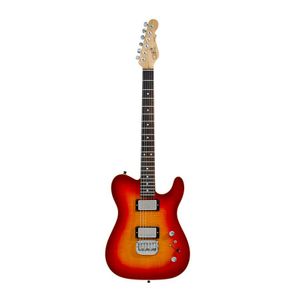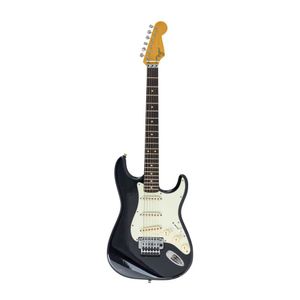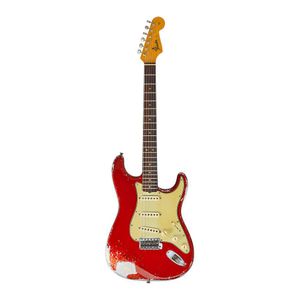1964 Fender L-Series Stratocaster Electric Guitar
You must be a subscriber, and be logged in to view price and dealer details.
Subscribe Now to view actual auction price for this item
When you subscribe, you have the option of setting the currency in which to display prices to $Au, $US, $NZ or Stg.
- Rosewood - A dense timber that varies in shade to very light brown to almost black. When rosewood is cut and sanded the colour of the timber will turn black, and after polishing and exposure to daylight, the surface will gradually lighten over time to light brown with black streaks.
The name comes from the odour emanating from the timber when it is planed, sanded or cut.
Rosewood was very popular for use in Victorian furniture in the second half of the 19th century, and at that time most of the rosewood was imported from Brazil. However it also grows in India and Indonesia.
It is used in the sold for chairs and table legs, but for carcase furniture such as side cabinets and bookcases, and for table tops it is always used as a veneer. - Maple - Maple, native to North America, is a dense heavy timber from light to yellow-brown in colour. It has very little distincive graining unless it is one of the variants such as birds-eye maple or burr maple, so was not used extensively for furniture in 18th and 19th century, where cabinetmakers and designers preferred timbers with more distinctive features such as mahogany, walnut, rosewood and oak.
Birds-eye maple has a seres of small spots linked by undulating lines in the grain, is highly sough and is used as a decorative veneer. Burr maple has larger and irregular grain swirls than birds-eye maple.
This item has been included into following indexes:
Visually similar items

A Kramer Sunburst Super Strat E.E Pro 1 electric guitar, American made, serial number B28446, high gloss Cherry Sunburst finish, solid Alder body, Rock Maple neck, rosewood fingerboard with pearloid dot inlays, Pearloid pickguard, gold plated hardware, coi

A G&L ASAT Deluxe electric guitar, 1996, American made, serial number GO 49573, gloss cherry finish, maple neck with Indian Rosewood fingerboard, twenty two medium-jumbo frets, satin finished 'Classic C' neck profile nine and half inch fretboard radius, G&

An Ernie Ball Music Man Luke electric guitar with EMG pickups, 2004, American made, serial number G24062, high gloss polyester 'Luke Candy Red' finish, solid Alder body, chrome plated floating vintage tremolo, 6 adjustable steel saddles, bolt on select map

A Greg Fryer Ian Moss model Fender Stratocaster electric guitar, Australian made, serial number 1, high gloss black polyurethane finish, solid Alder body, Rock Maple neck with rosewood fingerboard and Pearloid dot inlays, medium jumbo frets, locking nut, F
